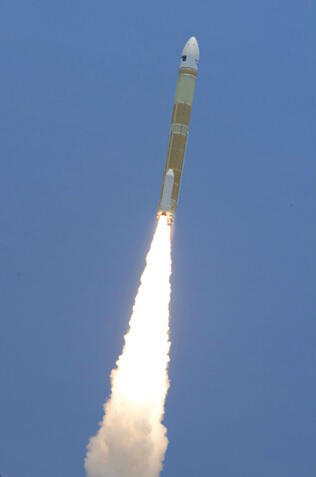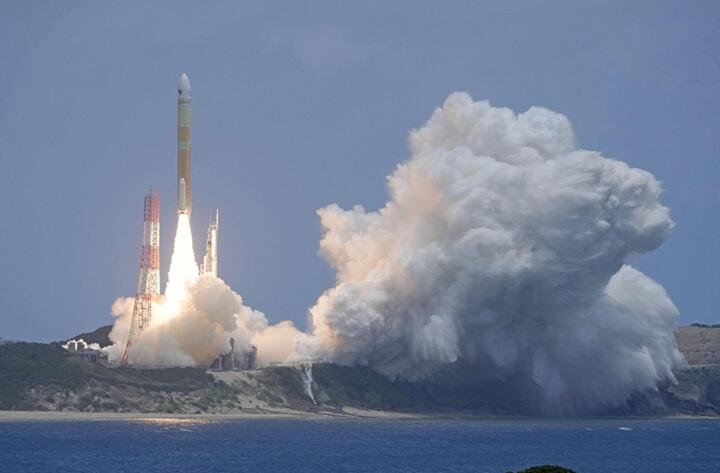Japan successfully launched Monday its new flagship H3 rocket carrying an Earth observation satellite from a space center on a southwestern island, in a boost to the country's space aspirations following the vehicle's failed debut last year.

Provided by Kyodo News
The domestically manufactured H3 rocket No. 3 lifted off from the Tanegashima Space Center in Kagoshima Prefecture at 12:06 p.m., releasing its first stage about 5 minutes later. The satellite then separated about 16 minutes later at an altitude of about 613 kilometers.
The signal from the Advanced Land Observing Satellite-4, also known as Daichi-4, was received at the Santiago Station in Chile at 12:59, and its Sun Acquisition Mode was confirmed to be operating normally, according to the Japan Aerospace Exploration Agency.
"It was a perfect score for the liftoff. We are relieved with the second consecutive success (in the launch of H3 rocket)," project manager Makoto Arita told a press conference.
The launch of the rocket, the successor to the country's current mainstay H2A vehicle, comes as Japan seeks to gain a foothold in the increasingly competitive satellite-launch sector, with plans to launch H3 rockets six times a year.
The launch of the H3 rocket No. 3 was initially scheduled for Sunday but was put off due to expected bad weather.
The launch of the maiden No. 1 vehicle ended in failure in March 2023. It was ordered to self-destruct minutes after launch due to its second-stage engine failing to ignite. The H3 rocket No. 2 in February was a success but carried a dummy satellite.
The No. 1 and No. 2 rockets were test rockets unlike the No. 3.

Provided by Kyodo News
The satellite carried by the No. 3 rocket is expected to be used for observing disaster-hit areas and monitoring ground transformation caused by volcanic activity or an earthquake.
Through the use of radar, the satellite can acquire images even in bad weather and at night. Given its wide coverage, the satellite is expected to contribute to the early detection of unusual movements like changes in volcanic activities, ground subsidence and landslides.
The liquid-fuel H3 rocket was developed by JAXA and Mitsubishi Heavy Industries Ltd. to serve as Japan's next-generation heavy-lift launch vehicle. The launch service price for the H3 is expected to be lower than that of the H2A, according to JAXA.
The operation of the H2A is expected to end in fiscal 2024 with rocket No. 50 and the H3 is scheduled to take over completely in fiscal 2025.
The H3 rocket will be also used in the U.S.-led Artemis Moon exploration program, in which Japanese astronauts are planned to be sent to the lunar surface along with U.S. astronauts, and in the explorations of Martian moons to retrieve samples.
Global competition has intensified since SpaceX of the United States, which boasts revolutionary technology and a strong track record in rocket launches, entered the market.




